by Mike Phifer
In the cover of darkness and fog, American troops quietly made their way down to the edge of the Niagara River. There they found boats waiting to ferry them across to the Canadian side. It was the night of July 2, 1814. The invasion of Upper Canada (modern Ontario) was imminent. Ahead lay a long, hot summer of fighting, but if things went well a good part of Upper Canada might finally be captured. Its capture was important because peace talks were nearing in Europe, and the United States would need the territory to use as a bargaining chip with Britain. Following the abdication of Napoleon, Britain was sending thousands of battle-hardened troops to North America to chastise the upstart Yankees. After the men climbed into the boats, they pushed off from the bank and began to row. The Americans were coming.
The Left Division of the American Army was a well-trained fighting force, but things were not always so. For the first two years of the war, the American Army suffered from poor commanders, mostly relic Revolutionary War veterans, and undisciplined, ill-led troops. Low morale, poor health, and a shortage of equipment had taken their toll. Despite some success on the western frontier, the conquest of Upper Canada had not been a mere matter of marching, as predicted by Thomas Jefferson. A small professional army of well-led British regulars, Canadian soldiers, and Natives had run roughshod over the Americans. By 1814, much needed changes were made in the American Army, both at the top and bottom.
Much-Needed Reform Comes to the American Army
Command of the American Left Division was given to Maj. Gen. Jacob Brown in 1814. He was one of the young, combat-experienced officers moving to the top. At 39, Brown had been a land agent, surveyor, magistrate, and militia officer. Through the war he had proven himself a capable officer. A fellow officer described Brown as a “self-taught, active, and highly intelligent officer.” He was a good choice.
Brown was not the only young officer promoted in the armies’ reshuffling of 1814. At 28, recently promoted Brig. Gen. Winfield Scott was the youngest general officer in the American Army. The 6’5” Virginian had proven himself an aggressive officer through the war. Unfortunately he could also be vain and bullheaded. In April 1814, Scott was ordered to Buffalo to put the Left Division in a “high state of discipline.” The troops of the Left Division were mostly veterans. The 9th, 11th, 21st, and 25th Infantries had all seen combat, as had the 2nd Artillery, Scott’s old unit.
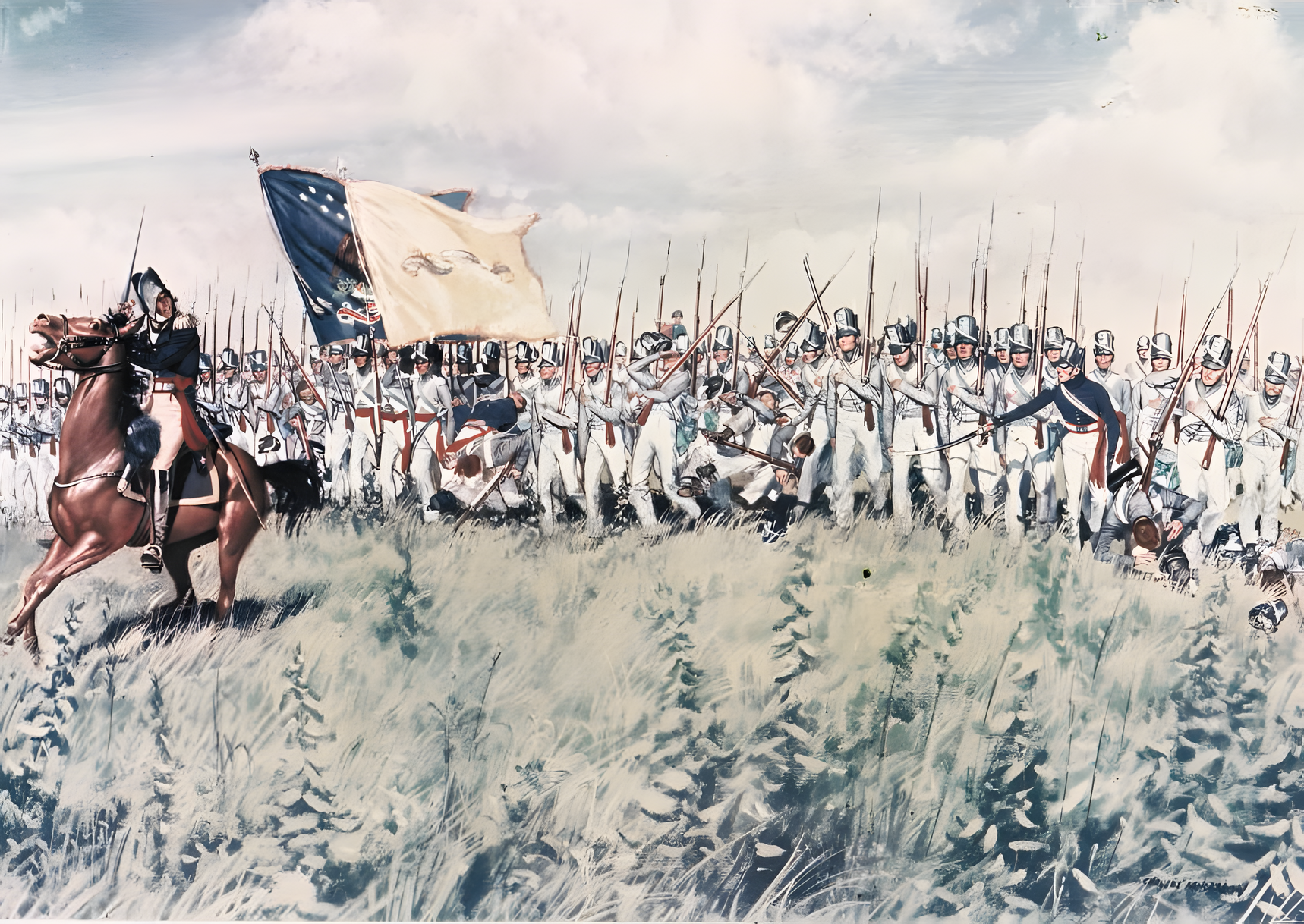
Scott, searching for a campsite that offered good sanitation, chose Flint Hill, just west of Buffalo. The health of the men was important to Scott; he made it his first priority. Men were ordered to bathe three times a week. Sickness and disease, which had plagued the Army, began to clear up, though the sick list was to rise again as disease was brought into camp by reinforcements. A shortage of uniforms also plagued the army; there were only enough blue coats for the 21st Infantry. The other regiments were issued short, gray wool jackets, usually worn as fatigue dress.
The second priority for Scott was discipline. He standardized the infantry drill manual to Alexander Smyth’s abridgment of the 1791 French manual Reglement. Previously, regiments trained under different manuals, making maneuvering together difficult. Drill, drill, drill was the life of the soldier under Scott. By the end of June, men of the 25th Infantry were drilling 7 to 10 hours a day. When the invasion of Upper Canada was ordered the troops were, as drummer Hank Jarvis said, “well acquainted with our business as soldiers … and ready for action.”
With more regular infantry reinforcements as well as New York and Pennsylvania volunteers arriving in camp, Brown began to form them into brigades. The 1st Brigade fell under the command of Scott, while 32-year-old Brig. Gen. Eleazar Ripley was given the 2nd Brigade. The volunteers forming the 3rd Brigade were put under the command of New York militia Brig. Gen. Peter Porter. This brigade had problems organizing, and only one Pennsylvania regiment was ready for service when the Left Division invaded Upper Canada. The rest of the brigade’s regiments and dragoons would follow in the coming days. Fighting with Porter were 400 to 500 Native warriors under Seneca chief Red Jacket. Finally, serving with Porter was a small unit of Canadian traitors called the Canadian Volunteers under Lt. Col. Joseph Willcocks. Artillery and regular light dragoons completed the Left Division. Not counting the Indians, the Left Division had a fighting strength of about 3,500 men as of July 1.
The Invasion of Canada
In late June, Brown received his orders from President James Madison and his cabinet. While a demonstration was made against Montreal by the American Right Division, the Left Division was to be landed on the north shore of Lake Erie, by the Lake Erie fleet, then march on to take Burlington, located at the western tip of Lake Ontario. From there, in cooperation with the Lake Ontario fleet under Commodore Isaac Chauncey, Brown was to take York (modern Toronto) and Kingston. But there were problems with this plan. The success of the campaign depended on Chauncey’s taking control of Lake Ontario from the Royal Navy, something he had failed to do so far. Secretary of War John Armstrong, who had forwarded the orders to Brown, suggested that while he was waiting for Chauncey he might take Fort Erie and the bridge at Chippawa. From there, Brown could determine what to do next depending on the circumstances. When Chauncey arrived carrying the big guns from Sacket’s Harbor, the British-held Forts George and Niagara at the head of the Niagara River could be captured.
The American Left Division, shrouded by a heavy fog, rowed across the Niagara River to Upper Canada, the 1st Brigade below the British-held Fort Erie and the 2nd Brigade above it. Scott, wanting to be the first man across, almost drowned when he jumped out of his boat into what he thought was shallow water. He misjudged the depth and was forced to swim for his life.
The Americans soon landed and were on the move. In the late afternoon, the British commander of Fort Erie, with a garrison strength of only two companies, surrendered the fort. Things were off to a good start for Brown.
Pearson Slows Down Scott’s Brigade
Scott’s Brigade headed out to the Chippawa River the following day. Brown would follow with the rest of the army after the artillery, supplies, and horses had been brought across the Niagara River. It would be 4 pm before the main body of the Left Division was following Scott.
Warned by his pickets of Scott’s advance, British Lt. Col. Pearson, with two flank companies of 100th Foot, a light company of the 1st Foot, two guns, and a detachment of dragoons, took up position along Frenchman’s Creek. Pearson, like many of the officers in the British Army serving in Upper Canada, was a veteran. He had seen action in Holland, Egypt, Denmark, and Spain. After ordering his men to tear up the bridge, he waited.
British guns and muskets ripped into Scott’s Brigade as they came to the wrecked bridge. Then Pearson withdrew to take up position at another creek and wait again for Scott. Pearson would do this all day, slowing down the Americans.
Scott finally reached the bridge at Chippawa, but decided he wasn’t strong enough to take it. He fell back two miles and encamped for the night on the south side of Street’s Creek. Brown caught up with him around 11 pm.
No Walk in the Woods for Porter
Canadian and Native skirmishers harassed the American camp the next day, July 5. Brown dispatched Porter’s Brigade and his Indians to clear them out of the nearby forest. Ordered to leave their hats behind so as not to be mistaken for Canadian militia men, 200 hungry and tired Pennsylvanians moved north, along with 300 Indians with white cloths tied around their heads to distinguish them from British Indians.
Outnumbered, the Canadian and Native skirmishers were pushed back with the Americans in pursuit. Porter’s men reached the edge of the woods overlooking cleared fields along the Chippawa River. Suddenly disciplined musketry hit them. Porter had bumped into a large British force that had moved across the Chippawa River and was forming up.
The Canadian 2nd Lincoln militia regiment and their Native allies engaged Porter at the edge of the woods. The Lincoln regiment was getting the worst of the fight when Pearson sent three British light companies to their assistance. Porter and his men quickly retreated, followed closely by their opponents. The Americans were driven out of the woods.
Major General Phineas Riall, commander of the Right Division of the British Army in Upper Canada and a veteran of active service in the West Indies, had moved his force into an open field north of Street’s Creek and the American camp. At 4:30 pm, the British began to advance toward the Americans. Brown immediately sent Scott’s Brigade “to meet the enemy.”
A Bloody Day at Chippawa River
As the 1st Brigade began crossing the bridge over Street’s Creek they came under artillery fire. Scott began to form his men, despite the shelling he was taking. American guns rolled after Scott and were quickly unlimbered, positioned, and began firing on the British guns, taking some of the pressure off the 1st Brigade.
Riall, who first saw Scott’s men in gray jackets, thought they were militia until they deployed under fire. “Why, these are regulars!” exclaimed Riall. He ordered the 1st and 100th forward and the 8th to counter the U.S. 25th Infantry moving in column west of Scott’s position.
A volley erupted from Scott’s Brigade, sending a wall of lead into the British advancing troops. Canister from American guns sprayed the redcoats with a hail of bullets. Under heavy fire, the British troops momentarily stopped and wavered. Officers immediately steadied them, and then the British regulars let loose a volley into the Americans.
Gray smoke clouded the field as musketry crashed from both sides. The British gunners rolled their guns within 200 yards of the American lines and fired. Dead and wounded soldiers were dragged out of the line as the ranks closed to fill in the gaps.
To the west, the U.S. 25th Infantry took heavy casualties from the British Light Infantry positioned at the edge of the woods. They managed to drive them off, then attempted to take the British in the flank. The British immediately fell back to prevent this, but were unable to support the other two British battalions in their new position.
More artillery was brought in by the Americans. The guns quickly opened on the redcoats with canister. The slaughter was too much for the British, and Riall was forced to withdraw. The British Right Division retreated across the bridge over the Chippawa River. The bridge was destroyed as the last troops were safely over.
It had been a bloody day. The 100th and 1st who had slugged it out with Scott had taken almost 50 percent casualties. Total British casualties were around 500 killed, wounded, or missing. The Americans fared better with about 300 casualties.
The British are Outflanked and Retreat
Riall continued to hold his position north of the Chippawa for two days after the battle. Informed by a local of an old logging road that led to the Chippawa upriver from the British, Brown sent Ripley’s and Porter’s Brigades along with some artillery to construct a bridge and cross the Chippawa. Scott, meanwhile, would keep Riall occupied.
Soon a blue-coated British dragoon, whipping and spurring his mount, thundered along the banks of the Chippawa River at full gallop. He reined up in the British encampment with the news that the Americans were attempting to outflank their position. Riall reacted immediately.
Pearson was ordered to take the flank companies of 1st Foot and three guns to slow the American flanking force. He soon found there was little he could do to prevent the Americans from crossing the Chippawa River. Outgunned and with no reinforcements available, Pearson eventually fell back.
Believing he had been outflanked by another American force upriver and harassed by Scott’s demonstration force, Riall ordered a retreat. Iron camp kettles shook out of the supply wagons as they rattled along trying to keep up with the rapid British withdrawal. Hundreds of the local population abandoned their farms and dwellings to follow Riall’s army.
Ripley and Porter were soon ordered back when the British evacuated Chippawa. Brown moved across the Chippawa River by boat on the night of July 8 and continued the advance north the next day to Queenston. It was here, with a view of Lake Ontario and British-held Fort George seven miles away, that Brown waited for Chauncey and received much-needed reinforcements. Porter’s Brigade, left behind to repair the Chippawa bridge, was also strengthened with the rest of its complement.
The Seige of Fort George
While the American Left Division advanced to Queenston, the British Right Division retreated to Fort George. Defending the 30-by-50-mile Niagara peninsula was proving a difficult job for the Right Division. This area, with its fertile agricultural land, was a key transportation route between Lake Ontario and Lake Erie. Riall had been ordered to hold it unless the attack came west from Detroit, then he could fall back to Burlington Bay leaving garrisons at Forts George and Niagara. To hold the peninsula, Riall had at the time of Brown’s invasion about 3,500 disciplined and well- trained, but scattered, redcoats. Much of his division was made up of regulars from the 1st, 8th (which arrived in the Niagara Peninsula on the same day as Brown’s invasion), 41st, and 100th, with the 103rd and 89th available for support. Canadian “regular” units, such as the Incorporated Militia of Upper Canada and the Glengarry Light Infantry, could also be called in for help. A detachment of the 19th Light Dragoons, a troop of the Niagara Light Dragoons, and a mobile field battery were with Riall. Finally, the flank companies of the Lincoln militia as well as a large number of “Nitchies,” as the redcoats called their Native allies, were available.
Riall took his defeated Right Division to Fort George where he stayed until July 13. Fearing he would be trapped between Chauncey and Brown, Riall then retreated west to Twenty-Mile Creek, where he could safely determine his next step. He was reinforced by the 103rd under Colonel Hercules Scott from Burlington Bay and the Glengarry Light Infantry on the march from York. More reinforcements were on their way from Kingston under Lt. Gen. Gordon Drummond, the British commander in Upper Canada.
Daily skirmishes broke out as Canadian militia began screening the Americans at Queenston. American patrols were closely watched by the local residents, who would in turn alert the Canadians. An officer in the U.S. 23rd Infantry wrote of the hostile population, “Not a foraging party but is fired on, and not infrequently returns with missing numbers.” In reprisal for these ambushes, Porter’s men began to torch farmhouses. The village of St. David’s was plundered and burned by Lt. Col. Isaac Stone’s New York Battalion when informed it had been the British headquarters. Angered, Brown dismissed Stone from the army, despite Stone’s excuse that he didn’t order the torching of the village.
On July 20, the American Left Division marched out of Queenston, heading north for Fort George. Brown decided he could wait no longer for Chauncey, who was focused on guarding his naval base at Sacket’s Harbor and wanting a decisive battle with the Royal Navy. Without Chauncey, Brown would have no heavy artillery to batter down the walls of Fort George. The Navy was not alone in abandoning the Left Division; the Indians serving with Brown went home, deciding he could handle the rest of the campaign by himself.
After two days of artillery fire, Brown called off the siege. He had hoped to draw out the garrison or even force Riall to march to the rescue of the fort. But Riall, who had retreated to Twelve Mile Creek, didn’t move. Instead, he waited for orders from Drummond. And the Americans, unable to capture Fort George, headed back to Queenston.
From there Brown ordered a retreat on July 24 to Chippawa, where he intended to resupply. Then he would strike deep “into the interior of the country,” engaging Riall and taking the British supply depot at Burlington Bay.
While scouting the American position, Chief John Norton learned from an American prisoner of Brown’s intention to encamp near Niagara Falls for the night. A messenger, whipping his horse, galloped toward Riall with the news of the Left Division movement. When he got the message, Riall ordered Pearson and his brigade, along with the 1st Militia Brigade, to follow the Americans.
On the morning of the 25th, Pearson discovered the Americans were not camped by the Falls, but at Chippawa. After stationing two companies of the Glengarry Light Infantry and some dragoons at Willson’s Tavern, he took up position with the rest of his force near the junction of the Portage Road, running north to south, and Lundy’s Lane, running east to west.
Meanwhile, to the north, Lt. Gen. Gordon Drummond arrived at the mouth of the Niagara River. Born in Quebec in 1772, where his father was stationed as a deputy paymaster general of British forces in Canada, Drummond joined the British Army as an ensign in 1789. He had seen service in Holland, Flanders, and Egypt and had held important posts in Jamaica, Canada, and Ireland, and finally took command of British forces in Upper Canada. He quickly headed south toward the Americans.
After ordering a British and Native contingent to clear out a small American force guarding some of the Left Division’s supplies at Youngstown, New York, across the river from Queenston, Drummond’s next step was to order Riall to bring up two brigades and reserve troops from Ten and Twelve Mile Creek. Drummond intended to gather all his troops and position them along Lundy’s Lane. Here Drummond could protect the two forts and be able to intercept the Americans if they moved against Burlington Bay.
The American Left Division seemed unaware of the large British force moving into its vicinity. July 25 found them at Chippawa enjoying a much-needed rest. Things were to change. An American officer on picket duty north of the camp observed British movement around Willson’s Tavern. He reported what he had seen, and ordered a patrol to investigate.
Confusion Over Conflicting Reports of Troop Movement
Reports and rumors filtered into the American camp that a large British force was at Queenston and that the British were advancing on the American side of the river, endangering Brown’s supply depot at Schlosser. Brown consulted with his adjutant general, Colonel Charles Gardner, who thought the British advance on the American side was a feint, that the main British force was on the Canadian side. More accurate information had to be obtained.
American officers observing the British at Willson’s Tavern became convinced that a strong British force was nearby. Brown disagreed. He was of the opinion that the real British objective was to capture the Left Division’s supplies at Schlosser. The best way to protect the supply depot, he decided, was to move against Fort George.
Scott and his 1st Brigade were ordered to head north to Queenston, and if he ran into the British, Brown ordered him to send for help. Along with the 1st Brigade, a company of artillery under Captain Nathan Towson and Captain Samuel Harris’s Light Dragoons would be accompanying Scott. His total force numbered about 1,200 men. The gray-clad troops had shouldered their muskets and were on the march by 5 o’clock.
Indian scouts soon brought news of the American advance. Riall became worried and quickly dispatched a message to Drummond. Then, believing the whole Left Division—rumored to number 5,000 troops—was moving against him, Riall ordered a retreat to Queenston.
Drummond received the message on the march with a British detachment from Queenston. He immediately galloped forward, ordering troops he found retreating from Lundy’s Lane to turn around and head back. Drummond meant to fight.
Drummond Prepares His Artillery on High Ground
At around 7 o’clock Drummond rode up on a mile-long and half-mile-wide ridge that ran east to west. At 50 feet on its highest point, the hill dominated the surrounding countryside, including the junction of the Portage Road and Lundy’s Lane. It was a prime defensive position that offered a clear field of fire for artillery. Drummond formed his troops on the ridge and along Lundy’s Lane which crossed it.
The artillery—which consisted of two 24-pounders, two 6-pounders, a 51/2-inch howitzer, and a rocket detachment—was positioned near a church and cemetery located on a knoll off the ridge, about 250 yards west of the Portage Road. The British regulars were ordered to form behind the guns. The 89th held the center, three companies of the 1st held the right, and the light company of the 41st held the left. The far left flank, between the Portage Road and the Niagara Gorge, was held by the light company of the 8th and the Incorporated Militia along a trail east of the road. The right flank was held by the Glengarry Light Infantry along a trail that led to Skinner’s Farm.
To the south, as Scott’s advance guard was moving toward Willson’s Tavern, British officers came tearing out of the building, mounted, and some galloped away. Other, more cavalier British officers reined up their horses and watched the advancing Americans through their telescopes. When the Americans were within musket shot, one British officer saluted Scott, who saluted in return, then spun his horse around and bolted away. At the tavern, Scott was informed by its owner that Riall was nearby with 1,100 men. Sending an officer with a message to Brown that he was going to fight, Scott moved on with his brigade.
As Scott’s Brigade moved north on the Portage Road, the advance guard was fired on by Indians in the woods. But they pushed through the woods and spotted the British formed up on their hill 750 yards away. Scott moved forward with his brigade at 7:15 pm, while the 25th Infantry was sent to “occupy the wood extending, to the river Niagara to the right.”
Scott Consider Retreat, Then Advances
For a moment Scott thought of retreating when he saw the size of the British force he was up against. He quickly put the thought out of his mind, for if he held his ground, Scott concluded, the British would think the American reserves were close and they would attack him. Besides, the 1st Brigade was thought to be invincible in the Left Division, and if it was seen to retreat it might cause a panic in the other brigades. Instead of retreating, Scott formed his brigade. Towson’s artillery took up position near the Portage Road. The 22nd and the 9th moved to the left of the guns as they marched into the clearing. The 11th followed behind.
The British artillery’s slamming lead into the advancing Americans caused a company of the 22nd to break. They bolted through the 11th, causing part of that regiment to run. American officers steadied the rest of the troops while Major John McNeil of the 11th chased after the broken troops and managed to rally most of them.
Musketry erupted from the American units at the British, who were out of range. Towson opened up on the British guns trying to knock them out, but his shots were having little effect on the British guns, which were positioned on higher ground.
The British guns continued to rip the 1st Brigade with roundshot and shrapnel. Casualties began to mount. “We were completely cut up, more than half the officers and men being wounded,” commented an American officer. But the 1st Brigade stubbornly held, despite the fact that every regimental commander was hit, except for Major Henry Leavenworth of the 9th.
For 45 minutes, Scott’s men endured British artillery fire. Knowing he had to do something, Scott ordered an advance. The American troops moved forward a hundred yards, then were ordered to stop. The British line was still more than 400 yards away, well out of musket range.
Northwest of the American line, the Glengarry Light Infantry, the 1st Militia Brigade, and Norton’s Indians spread out in a skirmish line and moved forward to engage the Americans. The Canadians opened up on Scott’s left, causing the 11th Regiment to wheel back and face the attackers. The Americans fired in volleys with little effect on the Canadians and Indians who spread out and took cover. Both sides blazed away at each other, but no one charged.
The three dwindling American regiments blasted away with their muskets until they ran out of ammunition. Their situation began to deteriorate as the British guns continued to blast them. The three regiments had marched onto the field with 750 men; now only about 250 remained. Only the coming darkness saved them, as British artillery fire became less accurate. If Drummond had ordered a charge then, the 1st Brigade would have been easily overrun; but the British commander believed he was up against the whole Left Division.
Jessup’s 25th Experiences Momentary Success
On the left flank the Americans were having some success with the 25th Regiment. Major Thomas Jesup, the regiment’s commander, leaving one company to hold his appointed position, advanced up a trail that the British had failed to guard. Trees, brush, and the growing darkness camouflaged Jesup’s movement as he came up on the British left flank.
The 25th Regiment opened up on the Incorporated Militia. The two companies holding the left flank of the militia line were hit hard and overrun. Many were captured. The Incorporated Militia was on the verge of breaking when Major John Kerby rallied the troops and fell back with a company of the 8th to a new position west of the Portage Road. With the British left flank now exposed, part of the British line readjusted itself to the left to join with Incorporated Militia and the 8th’s new position.
Jesup now moved up to the Portage Road, where he could observe the British guns blazing away. Captain Ketchum’s company was ordered to move forward and hold the crossroad of the Portage Road and Lundy’s Lane. It was not long before he captured enemy troops who stumbled onto them in the darkness. Maj. Gen. Riall, a musket ball in his arm, rode into Ketchum’s company and was taken prisoner. Ketchum soon fell back onto Jesup with over a hundred prisoners.
Jesup ordered Ketchum to take the prisoners back to the American lines. Ketchum had not gone far when he stumbled onto a British unit. Muskets flashed in the darkness as the British opened up. Most of the British prisoners escaped from Ketchum, except for Riall and a few other key officers.
Deciding he had to save his regiment, Jesup ordered a retreat when he heard the rest of the brigade was being shot to pieces. The 25th Infantry made it safely back to the American lines when they came upon fresh American troops moving up the Portage Road. Brown had arrived with much-needed reinforcements.
The 2nd Brigade under Brig. Gen. Eleazar Wedlock Ripley, was ordered to relieve Scott. As they marched onto the field, shrapnel from British guns exploded among them. Ripley’s Brigade continued on, passing Scott’s men and taking up position at their front.
The Americans were not only the ones to get reinforcements. Colonel Hercules Scott’s 1,800 tired and dusty men had come 20 miles. They found Drummond realigning his troops in the temporary lull in the fighting. The Glengarry Light Infantry, militia, and Indians were ordered to break off with the Americans and fall back to their original position on the Drummond right flank on a trail running from Lundy’s Lane to Skinner’s Farm. A company of the 1st, which had moved forward off the hill to support the Glengarry Light Infantry, was ordered back to the right of the guns. Drummond now had no skirmishers in front of his artillery—something he would soon regret.
Three 6-pounder guns, brought by Hercules Scott, were rolled up to join the rest of the British artillery. Drummond’s force now numbered about 3,700 men. Ammunition was dispensed to the front-line troops. The British and Canadians now waited, listening to the roar of the Niagara Falls, only about a mile away.
Miller and Nicholas Capture the British Guns
Brown knew the British guns had to be taken if success was to be had. The 21st Infantry, under Colonel James Miller, was given the job. Before they started their assault, British troops stationed to the west of the guns would have to be checked because they were positioned to nail the 21st Infantry in the flank. The 1st Infantry, a weak unit of roughly 150 men under Lt. Col. Roger Nicholas, headed out with orders to draw British fire.
Brown rode to where the 21st Infantry was forming up and told Miller to take the British guns. Miller replied, “I’ll try, sir.” Nicholas was going to try, too.
Nicholas took his regiment and went straight at the British guns instead of putting on a demonstration. The British guns spewed flame and lead that at first whistled over the advancing Americans’ heads. But the British quickly lowered their elevation and slammed the 1st Regiment with roundshot and canister. As his men began to drop, Nicholas called off the attack and retreated to the bottom of the hill.
As this was going on, at about 9:15 pm Miller led his regiment unobserved up the southeast side of the hill. With no British skirmishers, Miller managed to get within a hundred feet of the British guns. His men, steadying their muskets on a rail fence, let loose a volley that dropped 20 British gunners. The Americans then went over the fence with a bayonet charge and took the guns.
The 89th Attempts to Recover the Guns
North of this spot the British 89th was ordered to wheel its left wing and hit the 21st in the flank and recover the cannon. The night flashed as the British fired a volley into the Americans. The 21st Infantry took heavy casualties, but held their ground and returned fire at the advancing redcoats.
Volley after volley slammed into the 89th as they struggled over fences and gun limbers in their advance toward the artillery. Then the British came to a stop and traded fire with the Americans. The range was point blank as muzzle blasts from both sides crisscrossed each other in the darkness.
In the bloody firefight, the 89th was forced back to reform. Then, with the assistance of the 41st Light Company and a company from the 1st, they again headed toward the lost guns. Men dropped fast in the inferno of lead and flame. The commander of the 89th was wounded, as were many other British officers. Again the 89th retreated.
Again the British quickly returned and the fighting was as intense as before. General Drummond took a wound to the neck. Wrapping a handkerchief around it, he stayed in the raging battle. The 41st’s Light Company managed to take control of the still unlimbered guns that had arrived with Scott’s reinforcements. Unfortunately for the British, the horses were dead or missing, and the 41st’s Light Company was forced back cannonless along with the 89th.
This time the British did not return right away, allowing Miller to re-form his line and better secure his position. The captured guns were ordered to be taken back to the American lines. The 23rd, which had broken when fired on by the enemy troops, was rallied and ordered to reinforce Miller’s hold on the hill. They took up position to the right of Miller between Lundy’s Lane and the church. Nicholas’s 1st, which was the first to reinforce Miller, was ordered to the left of the 21st Infantry. Jesup’s 25th Infantry moved up and fell to the left of the 23rd Infantry. When Ripley arrived on the scene he ordered the captured guns to remain where they were, then sent an officer to request that Towson’s and the other Left Division’s guns be brought up. The American guns were quickly brought up and rolled into position. But what to do with the captured guns? Brown told Towson they would “make a formidable battery” together with their guns. Towson understood this to mean the captured guns would remain on the battlefield.

In the darkness that blanketed the battleground, Brown and a handful of officers rode off to determine what the British were doing. They soon ran into enemy troops.
“What Regiment is that?” asked one of Brown’s officers.
“The Royal Scots sir,” came the reply in the darkness.
“Stand you fast, Scotch Royals,” ordered the American officer. He then rode back to Brown’s party, which quickly headed back to their own lines.
By this time 300 men from Porter’s Brigade arrived. Many of Porter’s men had been parceled out for duties, thus weakening his brigade. Nevertheless, Porter was ordered to the left of the 1st Infantry. Brown was ready should the British come back. They would.
A British Attack in the Dark
Drummond had no choice but to continue the battle. He needed his artillery. He also needed to reform his tired and bloodied troops. With the low roar of the falls in the background, the troops struggled to get into position. A British officer and a few men stumbled into the American lines, only to be captured. An American officer did the same thing and was captured by the British. Darkness made things confusing. The British 104th fired on the Glengarry Light Infantry as they fell back to get fresh ammunition. Luckily casualties were light.
Two companies of the Incorporated Militia 8th’s Light Company held the left flank of the British force that was preparing to advance. The center comprised the 1st and 89th Foot. Two companies of the Incorporated Militia and the 41st’s Light Company composed the right flank. The rest of Drummond’s force waited anxiously as the attacking force formed in two ranks and marched forward without the aid of skirmishers.
American troops waiting for the attack could hear enemy officers giving orders somewhere ahead in the darkness. Then at 60 paces, a dark line appeared, advancing toward them. Between 30 and 90 feet from the Americans, the British and Canadian redcoats stopped and let loose a devastating rolling volley. American gunners positioned out front were the hardest hit. One officer went down with 36 wounds. The surviving gunners abandoned the guns and made their way to safety behind the American lines.
The American troops returned the British fire. Both armies fired volley after volley into each other. The redcoats aimed high because they were shooting uphill, but the Americans tended to shoot high, too, because the British troops were kneeling on one knee. Still, enough musket balls were finding their mark to make the firefight bloody. The troops were so close that musket flashes lit up the night, revealing the redcoats’ buttons on their jackets.
For 25 minutes each side pounded the other with lead and flame. Drummond galloped from regiment to regiment, oblivious to enemy fire, encouraging his men. Finally, he ordered his men to fall back.
The American troops quickly began to re-form their lines. Taking from the dead and wounded, American soldiers replenished their cartridge boxes. Ripley, holding the front, was in desperate need of reinforcements. Brown hesitatingly ordered Scott’s three regiments, which had been merged into one unit, to the front. These troops had barely gotten into line when the British and Canadians attacked again.
It was 10:45 pm as both sides continued to hammer one another in the bloody slugfest for control of the captured guns. American guns were back in action, but again proved to be a major target for the British. The gunners had another problem as well—they were running low on canister.
The second firefight quickly became more intense than the first. Porter’s Brigade was caught with a volley as they were dressing their ranks. For a moment an unnerving silence befell the battlefield. A British officer shouted to ask the Americans if they had surrendered. No answer. The question was asked again. An American officer shouted back, “We never will surrender!” The fighting resumed, but all was not well for the Americans.
The Canadian Volunteers serving in Porter’s Brigade began to fall back. They knew if they were captured they would be strung up as traitors. The rest of Porter’s men fired a volley and began to fall back with them. All the troops were rallied by the officers a hundred yards away, but now there was a hole in the American line. The American 1st Infantry wheeled its flank to the left and fired volley after volley into the redcoats to prevent them from exploiting the gap.
The American 23rd Infantry also slowly started to give ground. Elements of the 21st Infantry started to fall back as well. Things began to look bad for the Americans until Ripley rallied these wavering troops and sent them back to the firing line.
Then Scott, with his 1st Brigade, attempted something bold. He formed his men in a column and attempted to break Drummond’s line. “Forward and charge my brave fellows!” encouraged Scott. The 1st Brigade was forced to move between the opposing lines, running the risk of drawing friendly fire as well as the enemy’s. This was exactly what happened. Scott’s Brigade was hit hard by fire from the British as well as the American 2nd Brigade. Scott’s men broke and headed for cover along the trail that led to Skinner’s Farm. There Scott rallied them.
A Respite, Then a Third and Final Attack
The firefight had lasted for 45 minutes and still the American line had not broken. Drummond ordered his men to fall back. It was a much-needed respite for both sides. The British and Canadians were fatigued—some of them had been fighting and marching for 12 hours. The Americans were in no better shape. The cries of the wounded and dying who littered the dark battlefield only made things worse for the survivors. The depleted American 25th Infantry was forced to form its men in one rank instead of the customary two or three. Things did not look good for Brown when the redcoats marched back for a third and final attack at 11:30 pm.
Drummond attacked the same place he had the last two times—the American center. Scott attacked as well. Taking his men north, Scott attempted to flank the British. Instead they got caught in a withering fire from the British west wing as they attempted to pass them. Scott’s troops retreated behind American lines and re-formed.
While Scott’s failed attack was going on, Brown was wounded in the inner thigh. He managed to stay in the saddle and even urge his mount closer to the fighting. A second musket ball struck him, almost knocking him from the saddle. In extreme pain, Brown nevertheless stayed in the battle, taking position behind Porter’s Brigade.
The firefight continued to rage as both sides poured volley after volley into each other. Neither side would give ground until Porter ordered his men forward. Along with help from the American 1st Infantry, Porter began to slowly drive back the British left.
Jesup on the right flank was also having success. His unit, the 25th, managed to drive the British off with heavy fire. It was not all one way, though—Jesup was wounded for a fourth time and Scott, who was talking with Jesup, was severely wounded.
The trouble spot for the Americans was the center. Here the British managed to fight their way to the captured guns. It was a vicious melee around the guns as men bayoneted and clubbed each other. But with their flanks forced back, the British center had no choice but to retreat as well. It was midnight and the battle was over.
Brown, urged by some of his officers, ordered a withdrawal to Chippawa. It was not expected the British would attack again, and the tired American troops needed food and water. Then the severely wounded Brown intended to turn command over to Scott, but after discovering Scott had been carried from the field, gave command to Ripley. Brown’s orders to Ripley were simple: Gather the wounded and retire, fighting only if the British attacked.
Ripley was hard-pressed to find men to manhandle the captured British guns down the hill; they were needed to collect the wounded. Horses were a scarcity, because most of them had been killed in the fighting or had run off. Thus, while capturing the guns was difficult, removing them was proving almost impossible.
Like the darkness that at times confused the combatants at Lundy’s Lane, so do the facts of the captured guns become confusing. Accounts among participants vary. It has often been reported that, as the Americans were preparing to retreat, a small force of British troops attacked the rear guard and recaptured the guns. Recent research and other firsthand accounts dispute this claim. It is possible that two of the guns were recaptured from a party of American soldiers sent to retrieve them and that the British took full possession of the remainder the next morning. At any rate, the Americans only took one of the British guns and left two of their own behind.
Sixty wagonloads of wounded rumbled and rolled south to Chippawa as the American Left Division withdrew as quietly as possible. They had just survived the bloodiest battle of the war. It was “one of the most desperately fought actions ever experienced in America,” commented Colonel Miller. Roughly 860 Americans were killed, wounded, or missing.
Who Won the Battle?
The British and Canadian forces eventually fell back about a half-mile from Lundy’s Lane and waited for a rumored American attack. The “chilling night” was made more chilling for the soldiers by the cries of the wounded. The next morning revealed the ferocity of the night’s fighting. A Canadian officer commented, “Mutilated human bodies scattered over the battleground, men and horses nearly cut in two by our rockets together with the groans of the wounded, rendered me more dispirited than even the hottest part of the engagement.” The 880 British and Canadian casualties had been almost equal to the Americans. But who won the battle?
The Americans claim to have won it because they captured the hill and held it against repeated British assaults. The captured guns were left behind only during the withdrawal. The British, on the other hand, also claim victory because the Americans withdrew and the guns were retaken. Added to their claims of victory, especially on the strategic level, is the fact that Americans invaded no farther into Canadian territory.
In the months that followed, fighting would continue on the Niagara peninsula. The Americans eventually holed up in Fort Erie while Drummond conducted an unsuccessful bloody siege. Drummond then retreated to Chippawa where the Americans followed, but then decided the British were too strong and headed back to Fort Erie. On November 5, 1814, the Americans blew up Fort Erie and returned to the United States to find better winter quarters.
Thus the Niagara campaign of 1814 ended unsuccessfully for the Americans. The peace talks in Europe went better for them, however. The international border would be restored as it was before the war began.
As for the American soldiers of the Left Division, they could proudly claim they went toe to toe with the British regulars and stood their ground. Veteran British officers who had fought in Spain with Wellington maintained they “never saw such determined charges as were made by the Americans in the late actions.” They would go on to say, “Only the steadiness of British soldiers alone could have withstood them.”
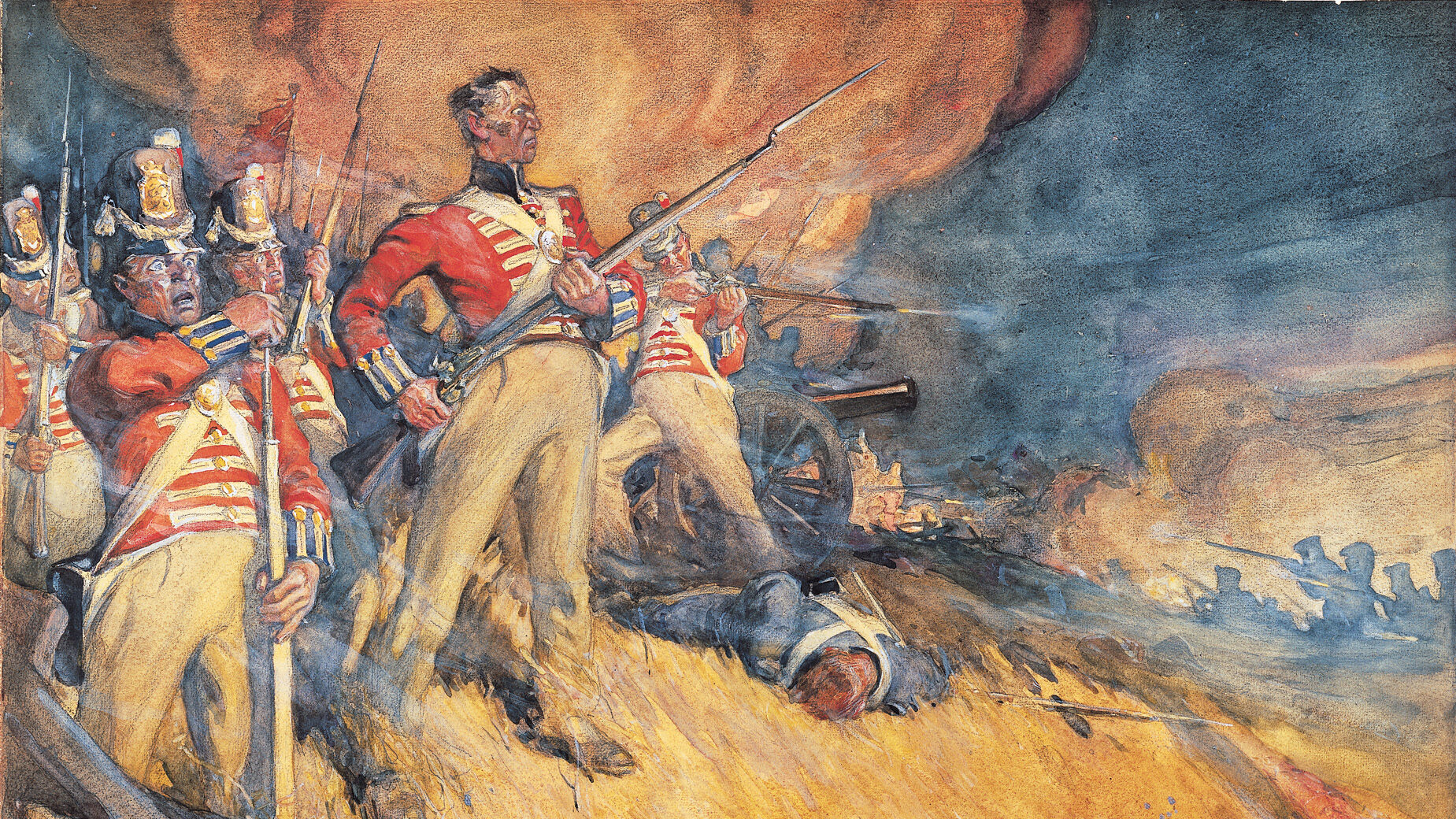
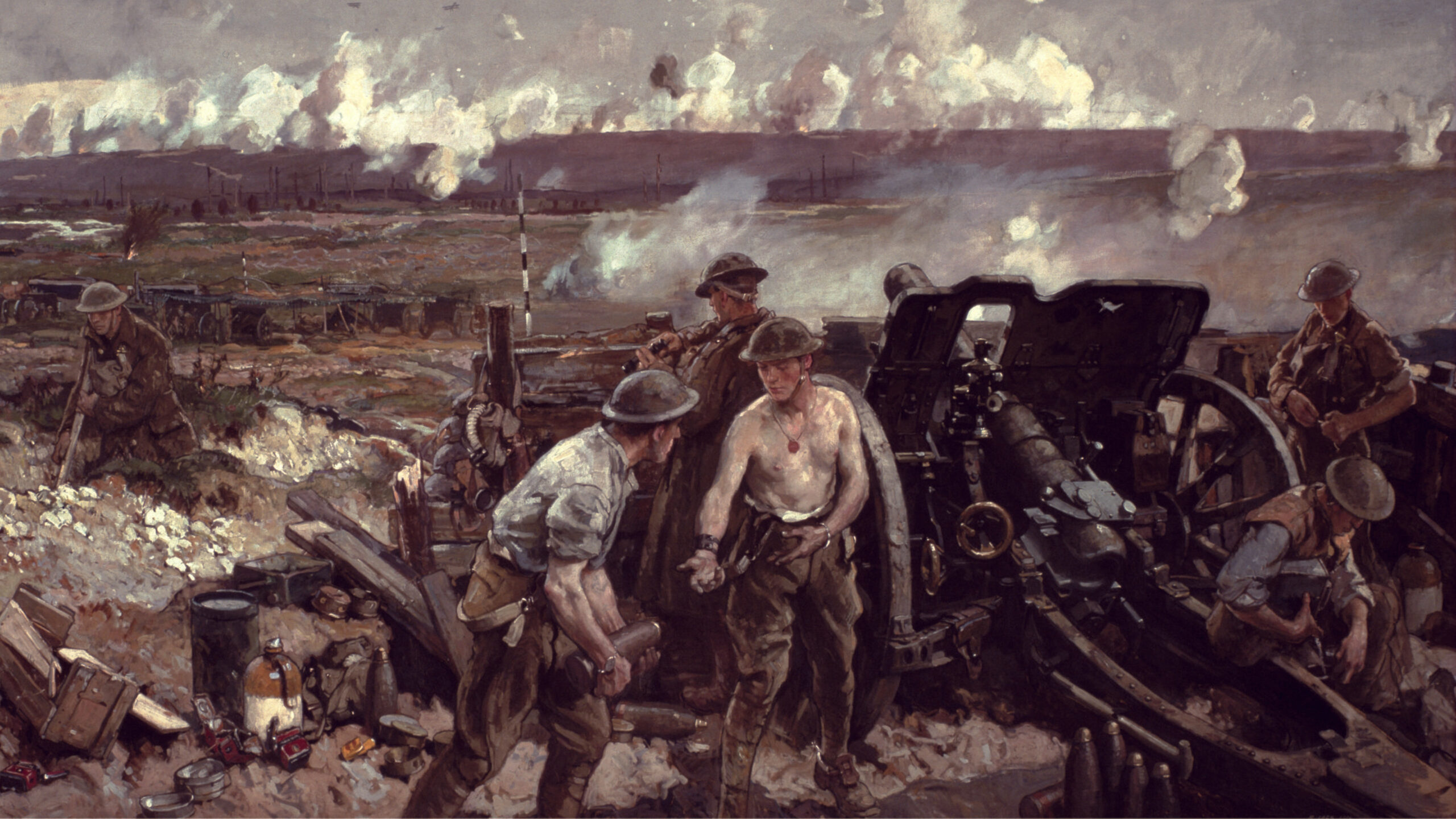
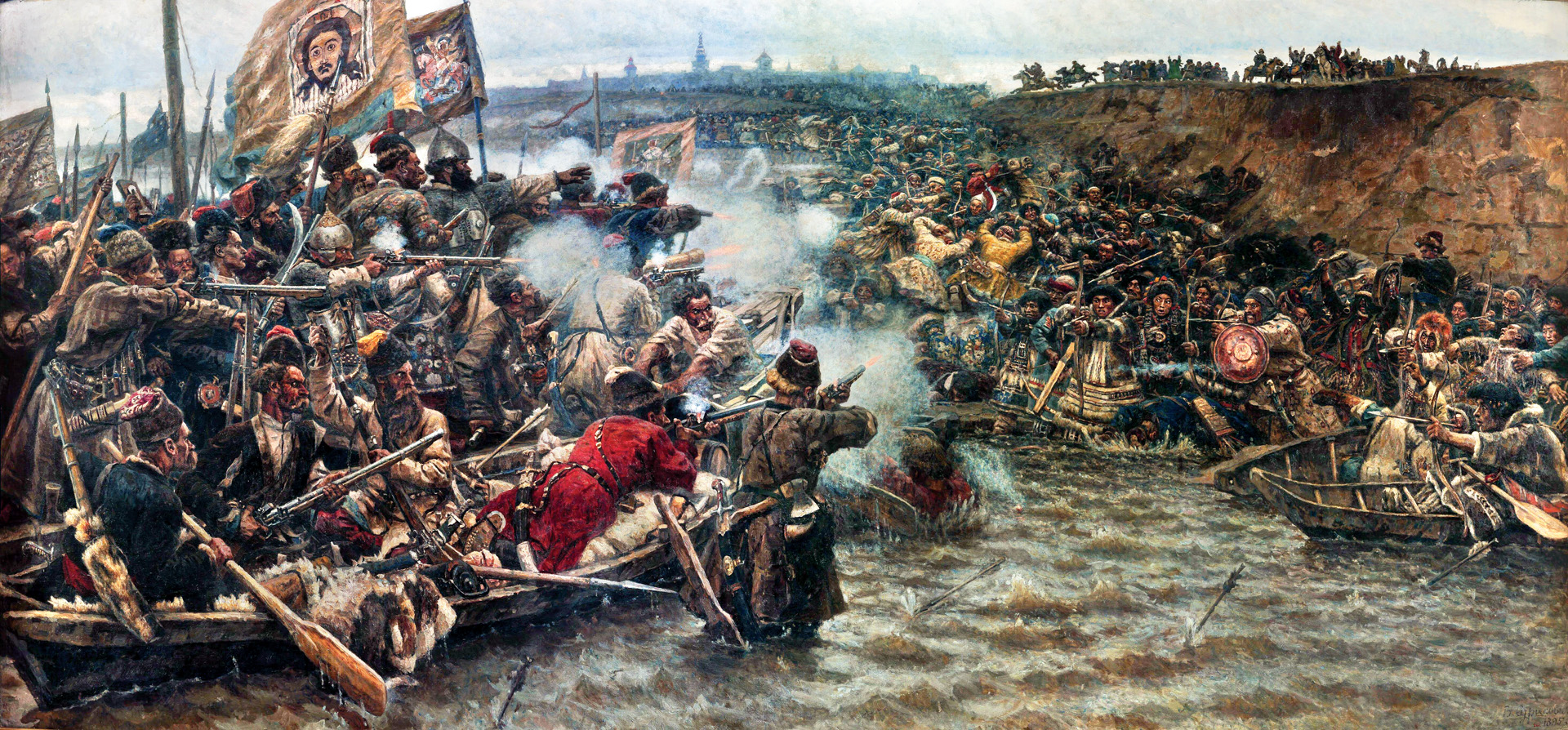

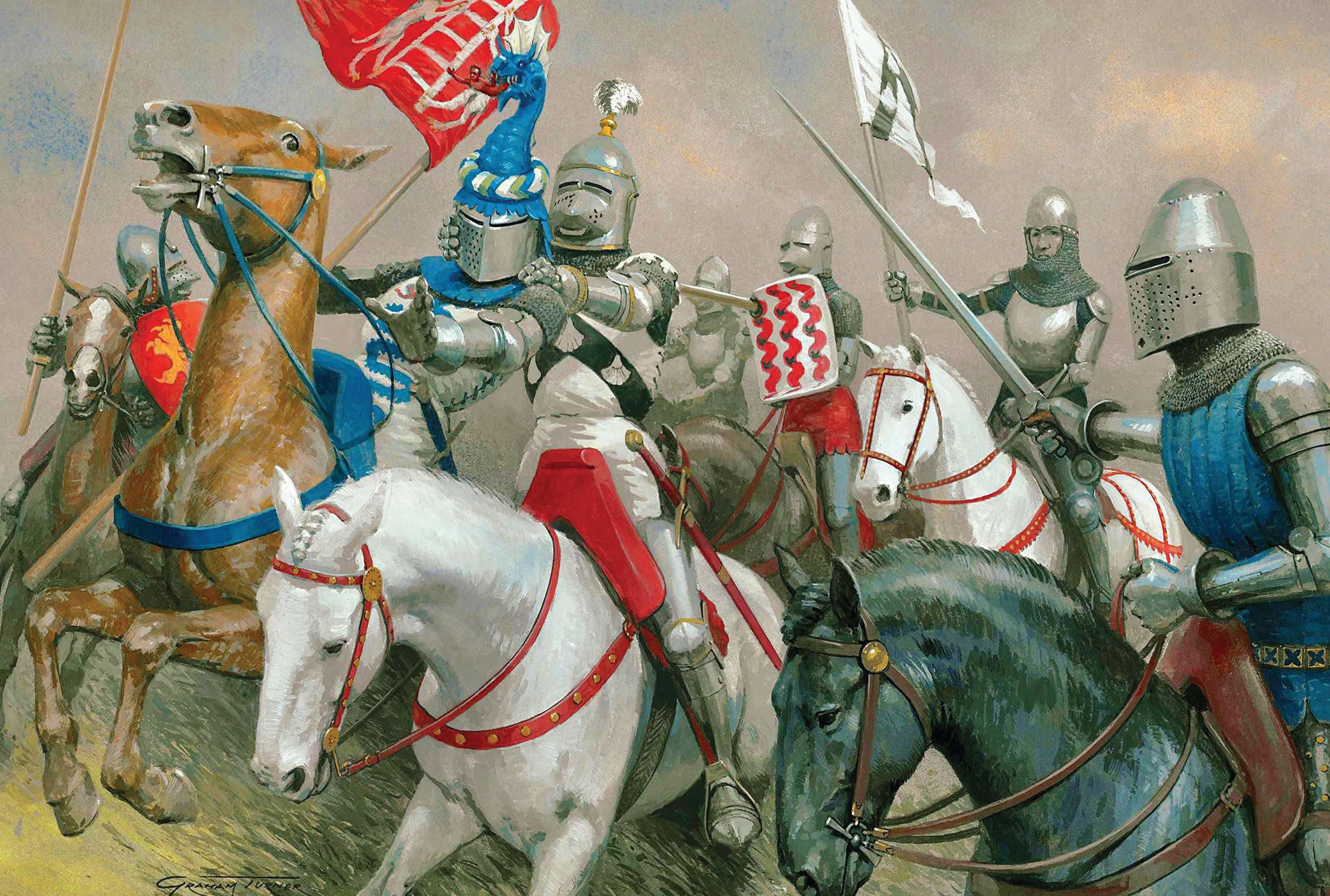

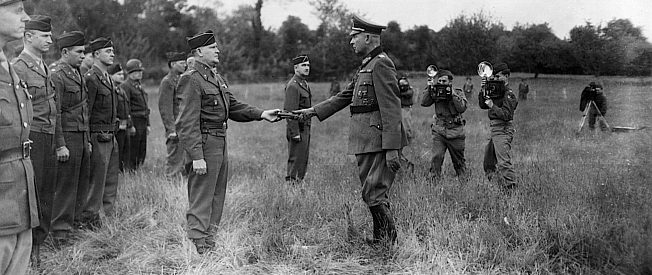
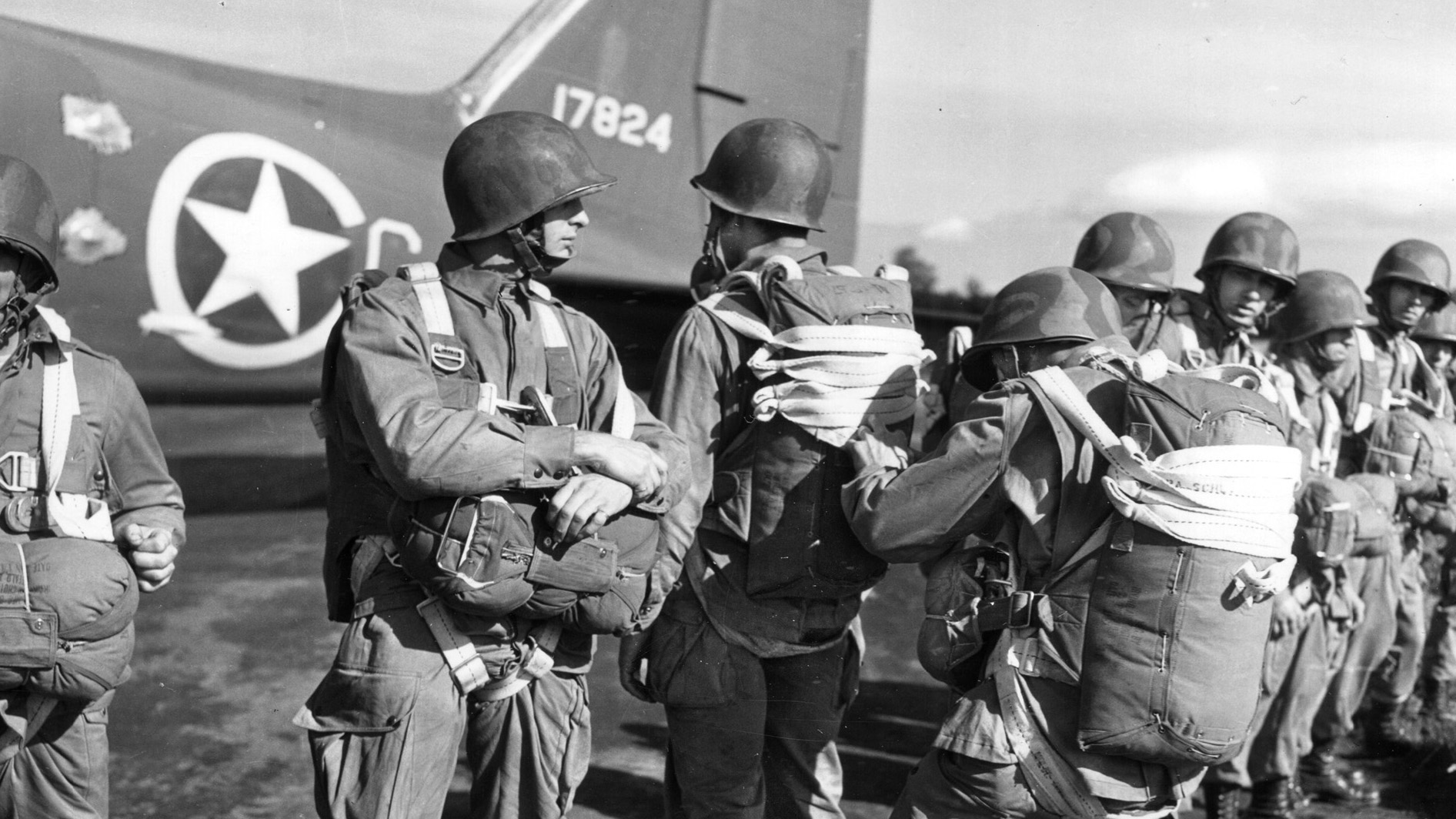
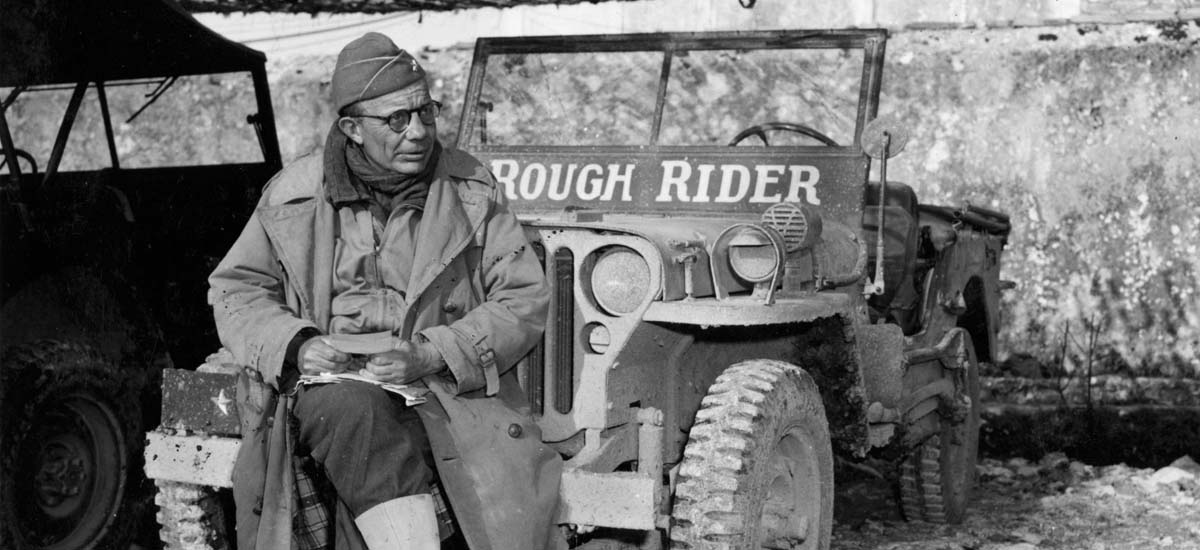
Join The Conversation
Comments
View All Comments